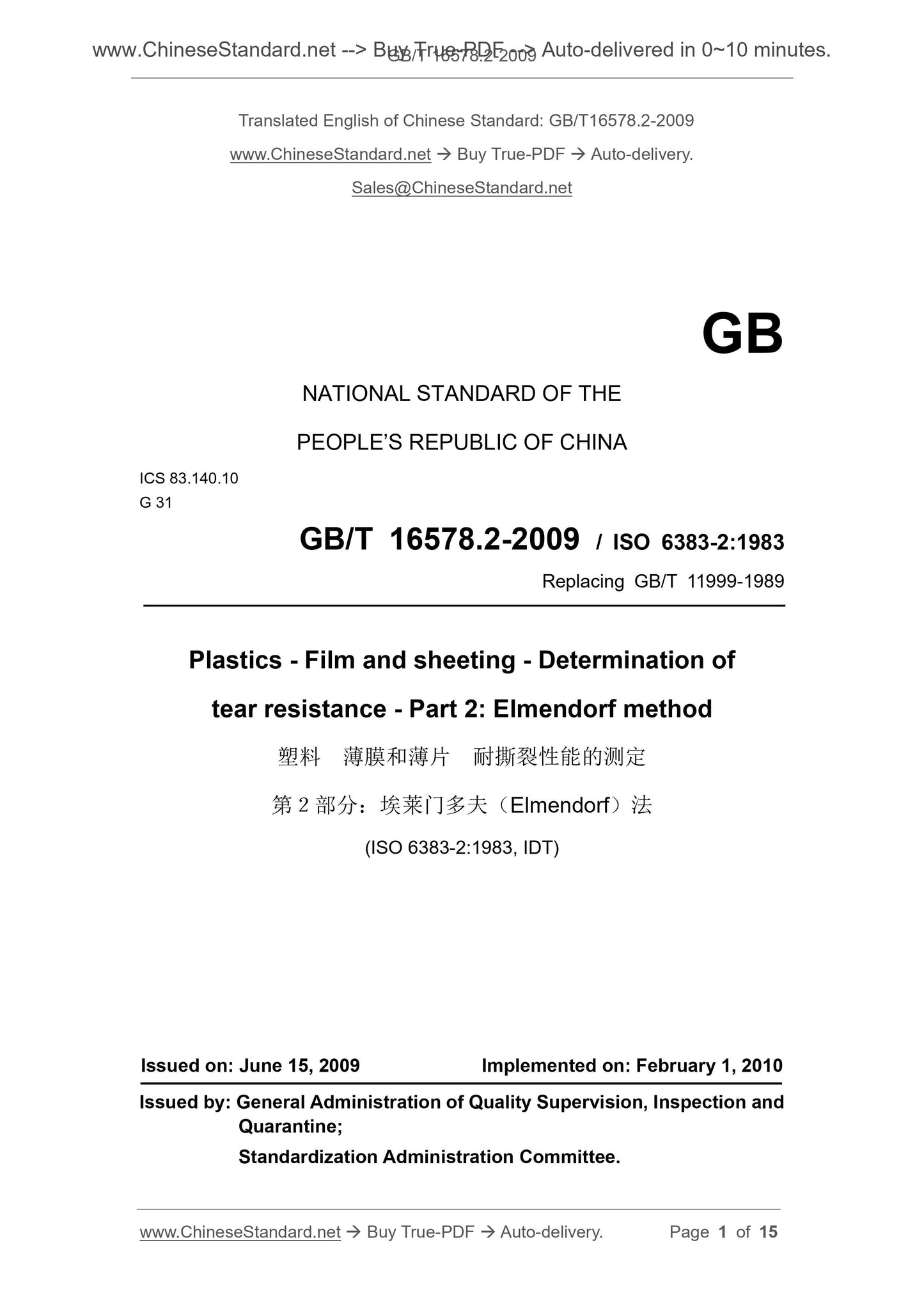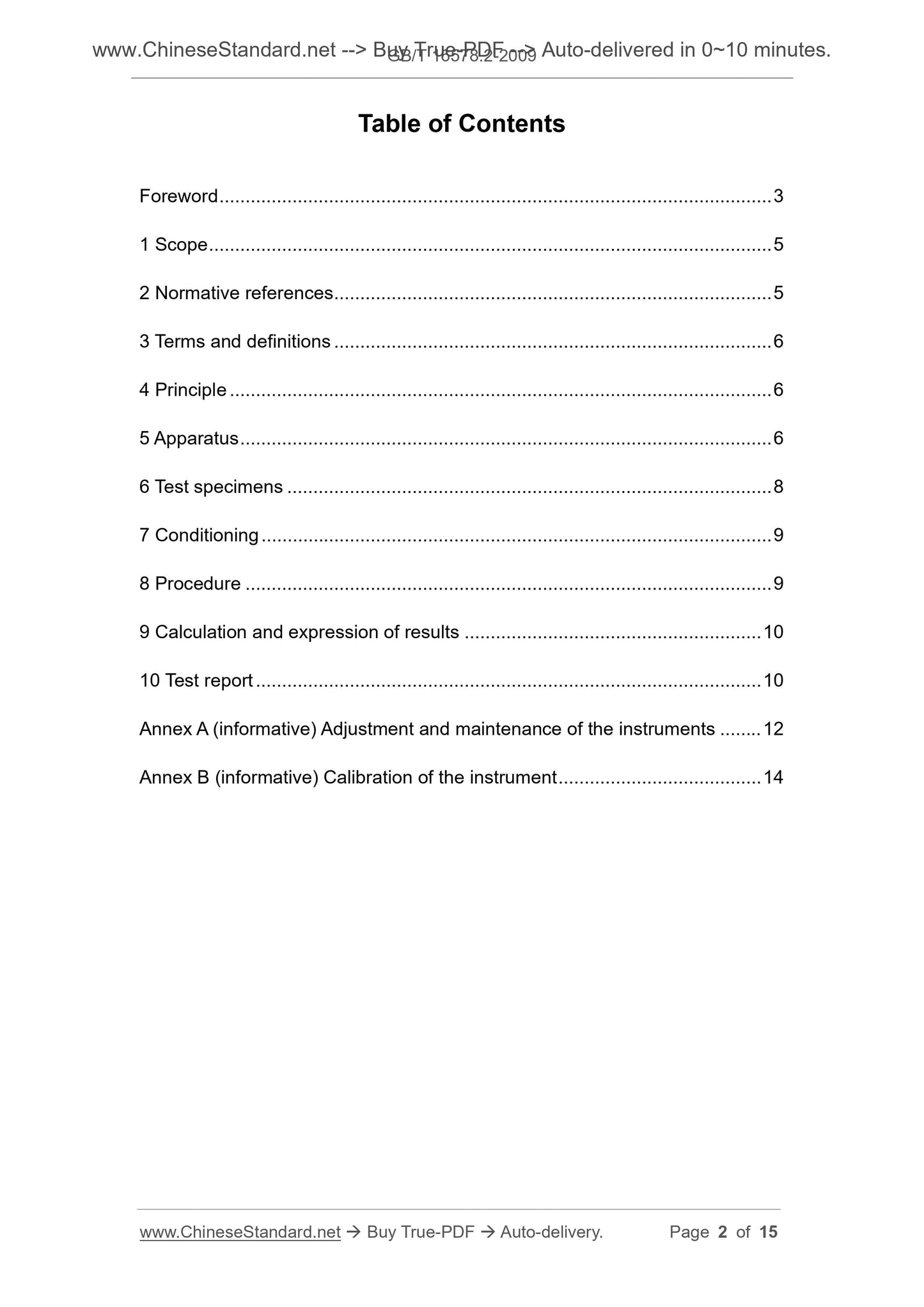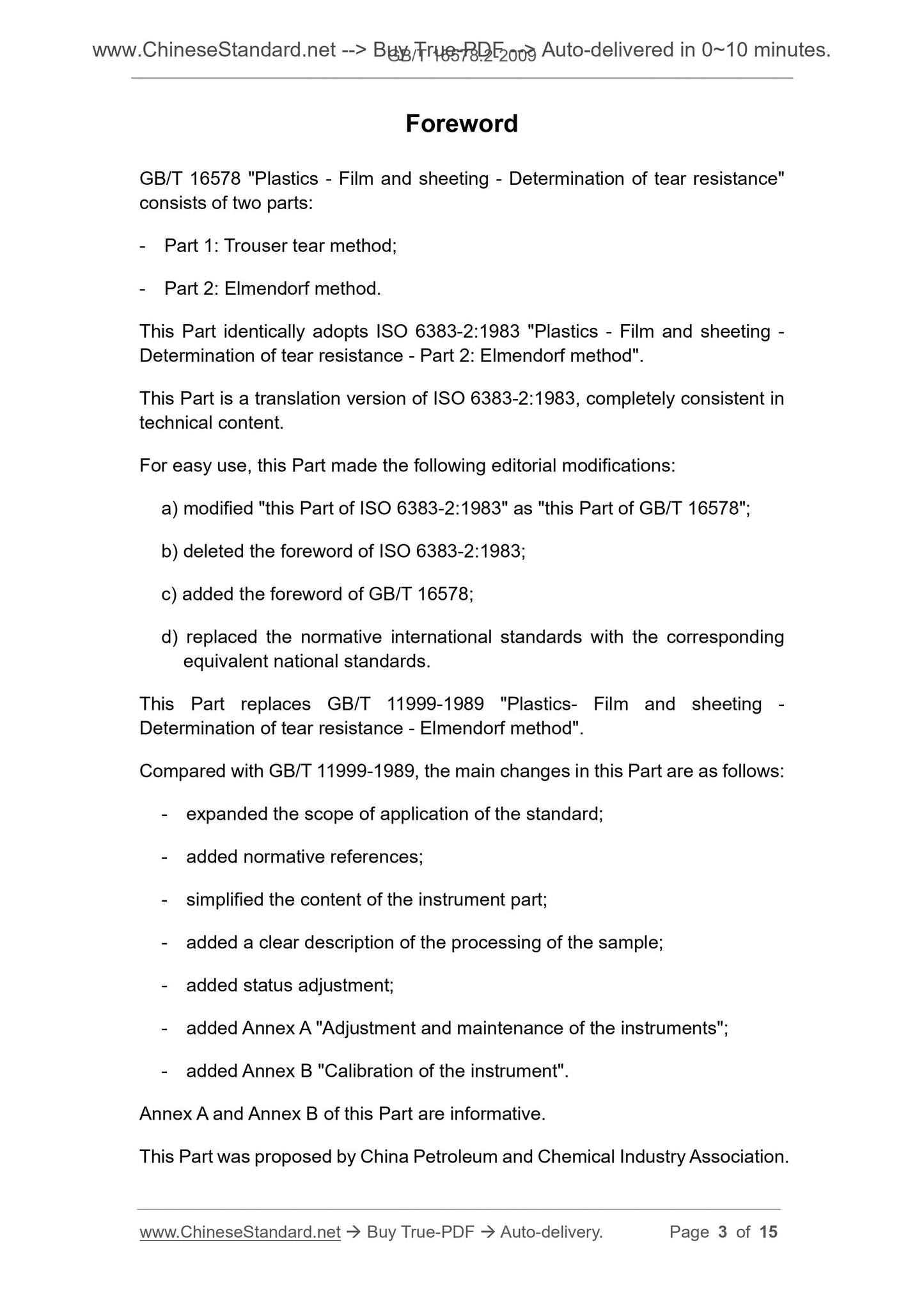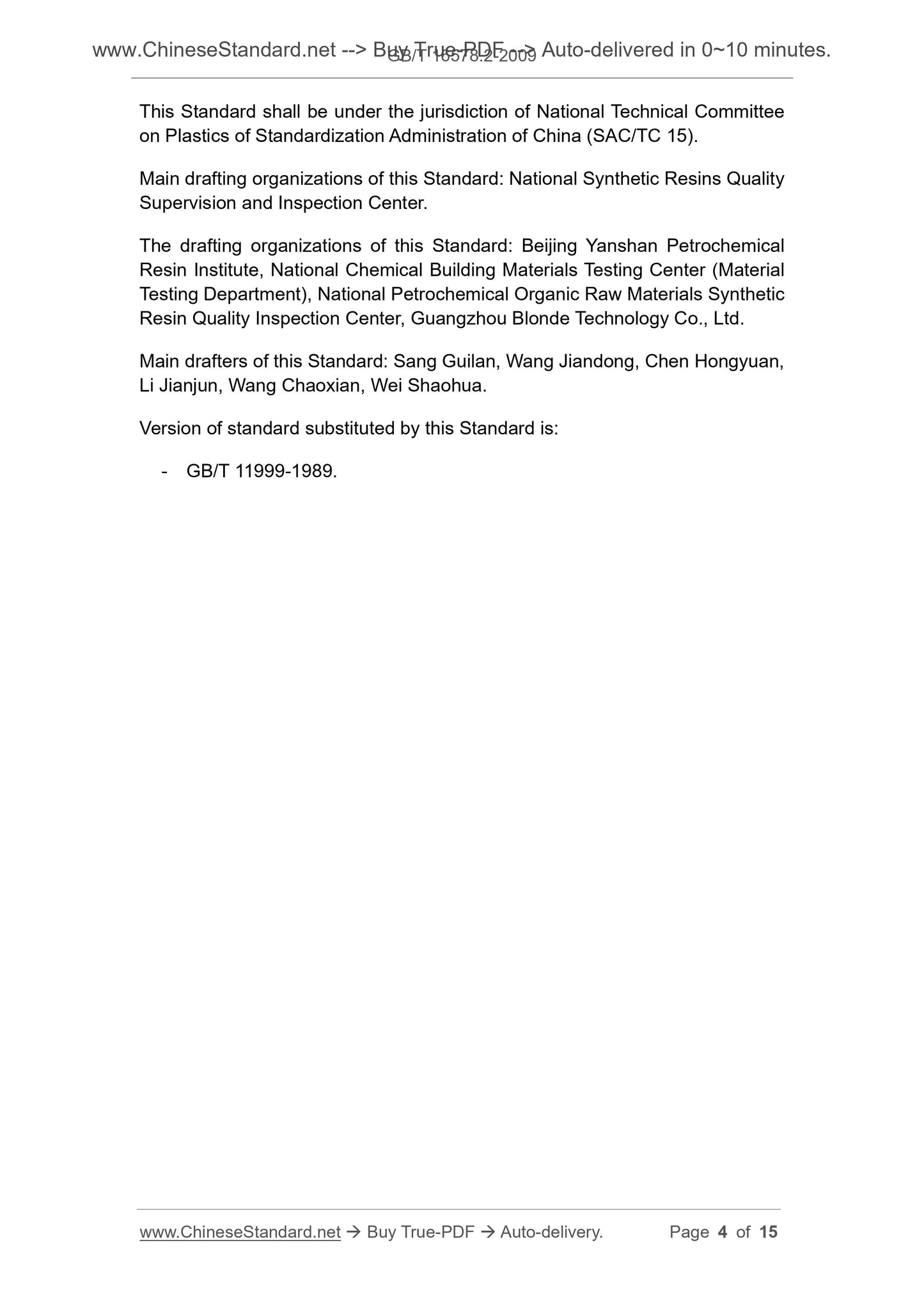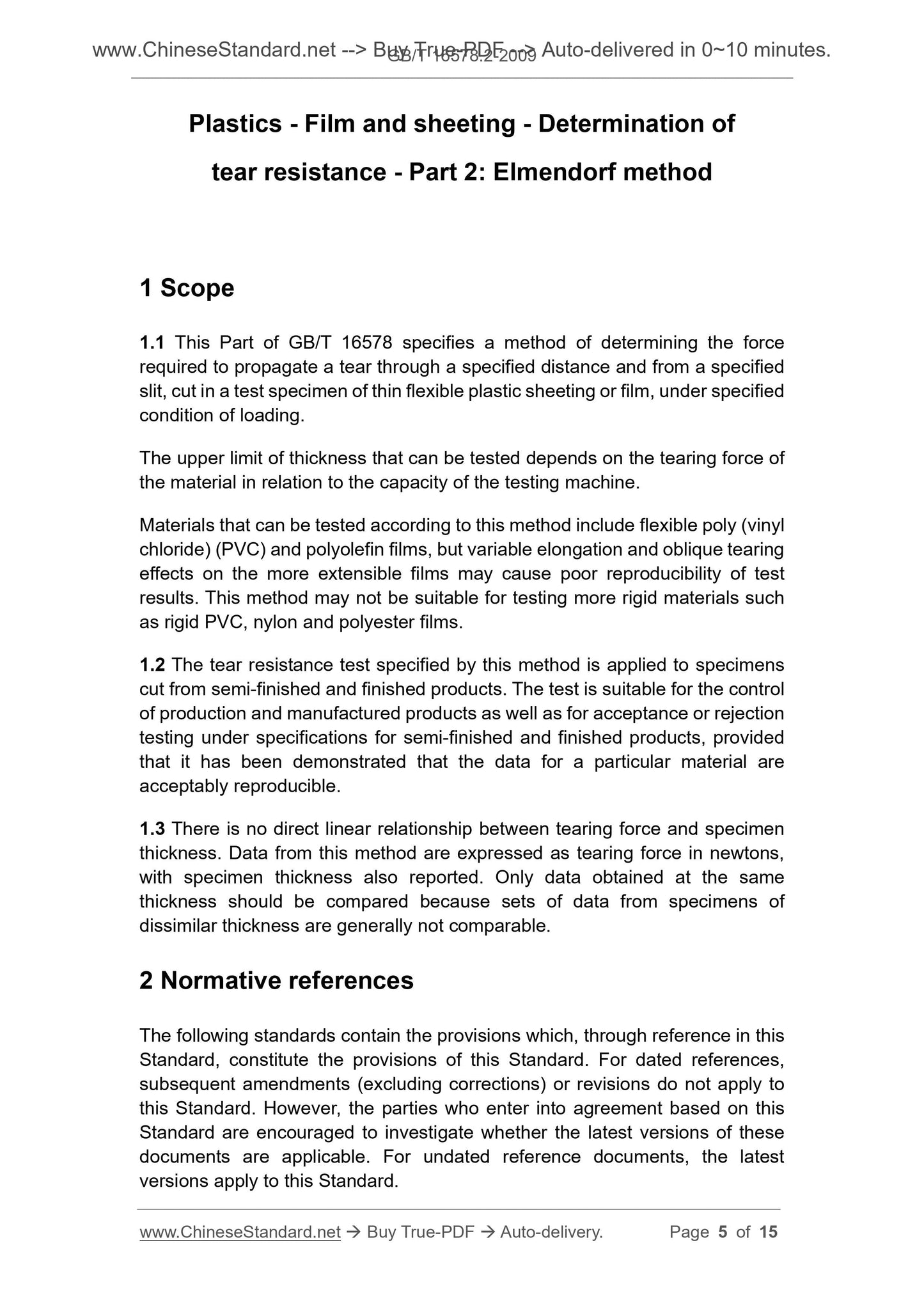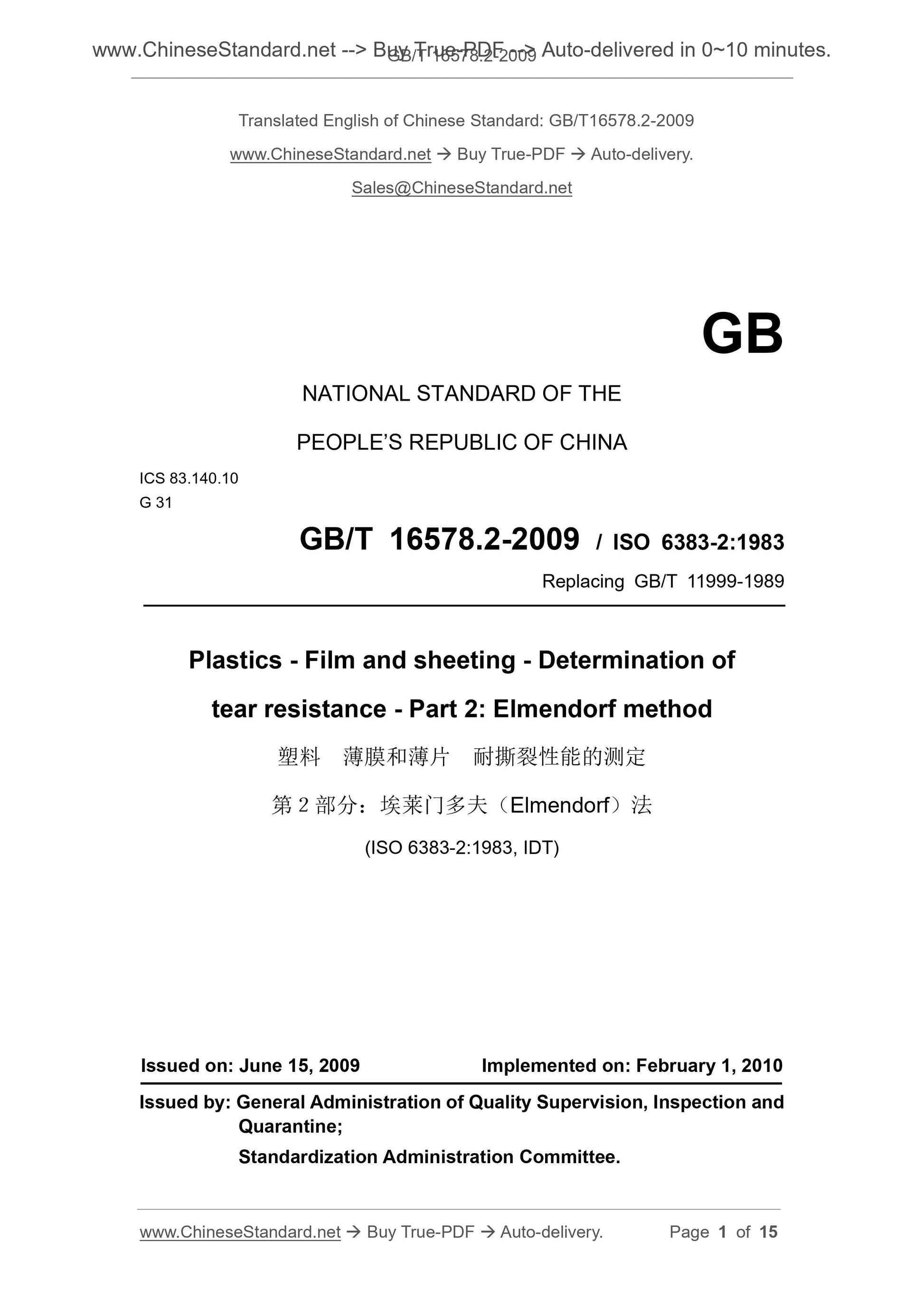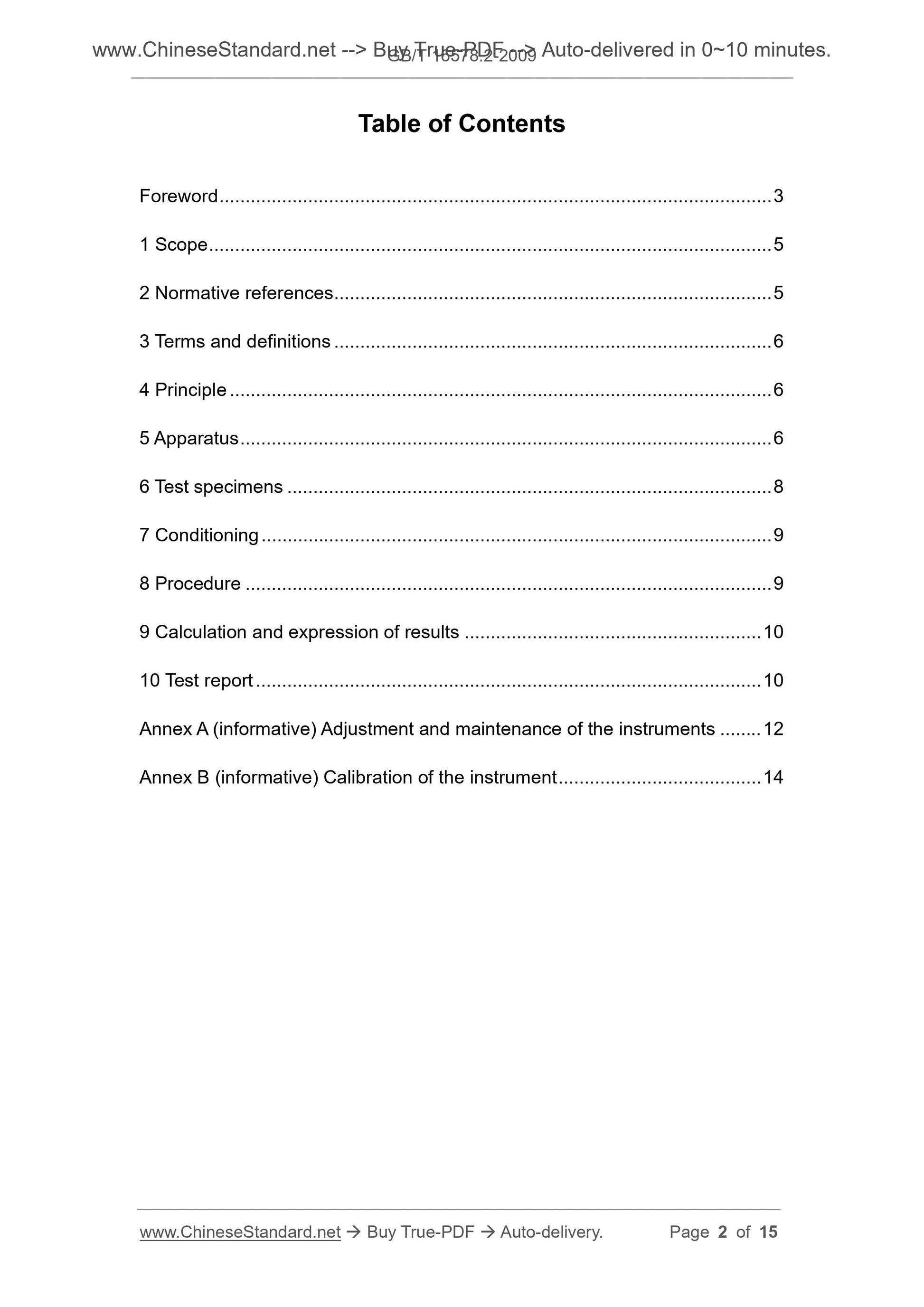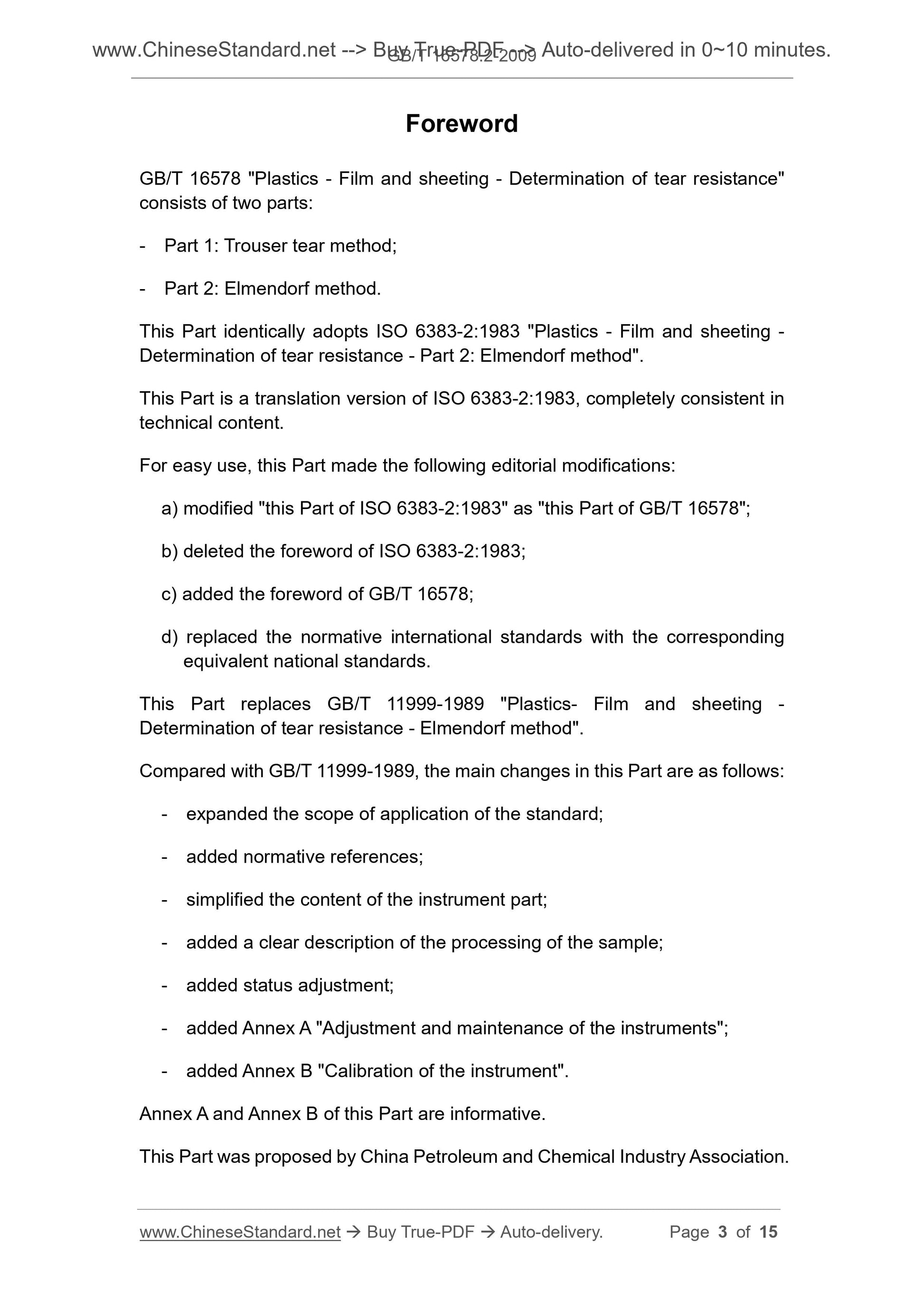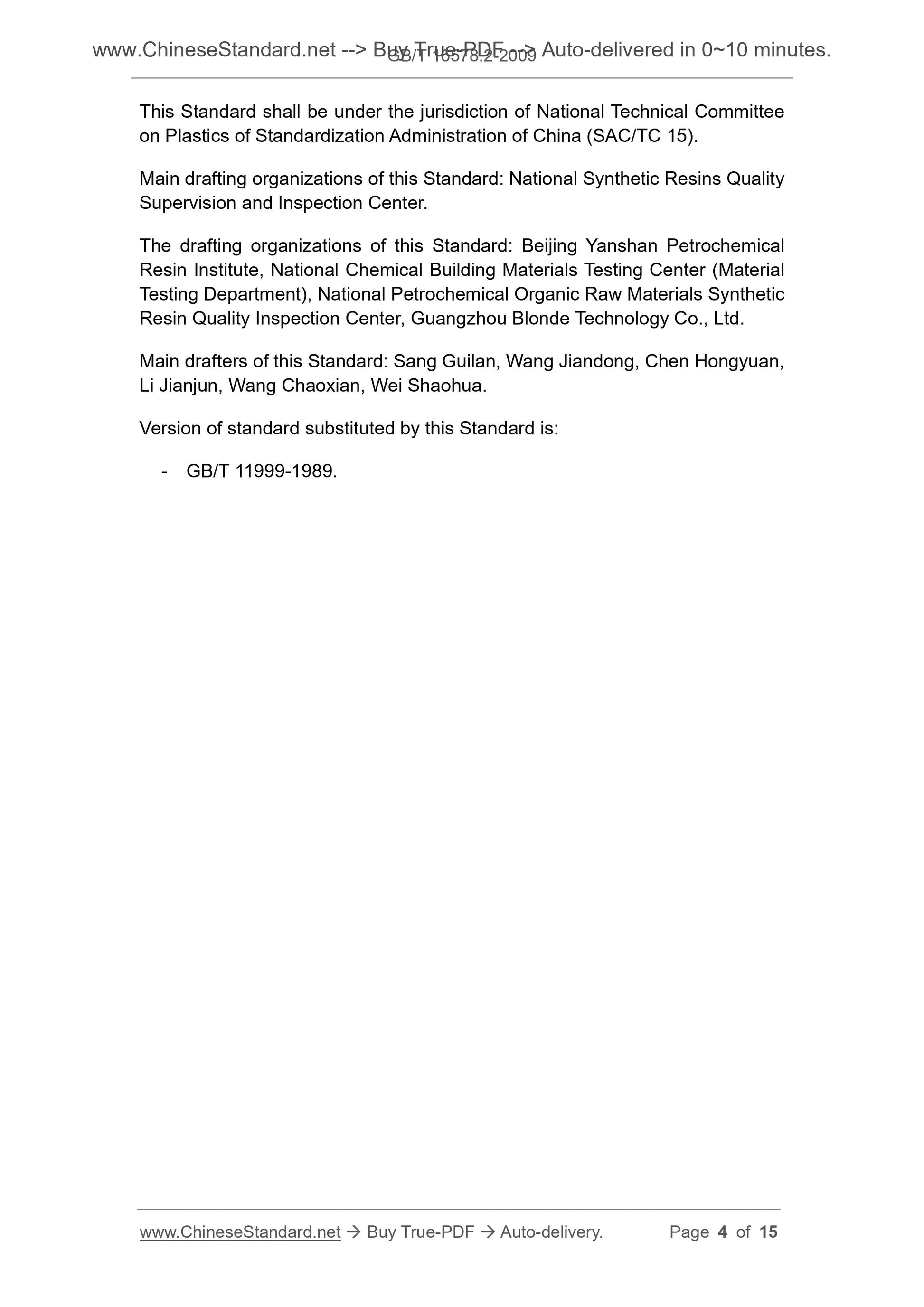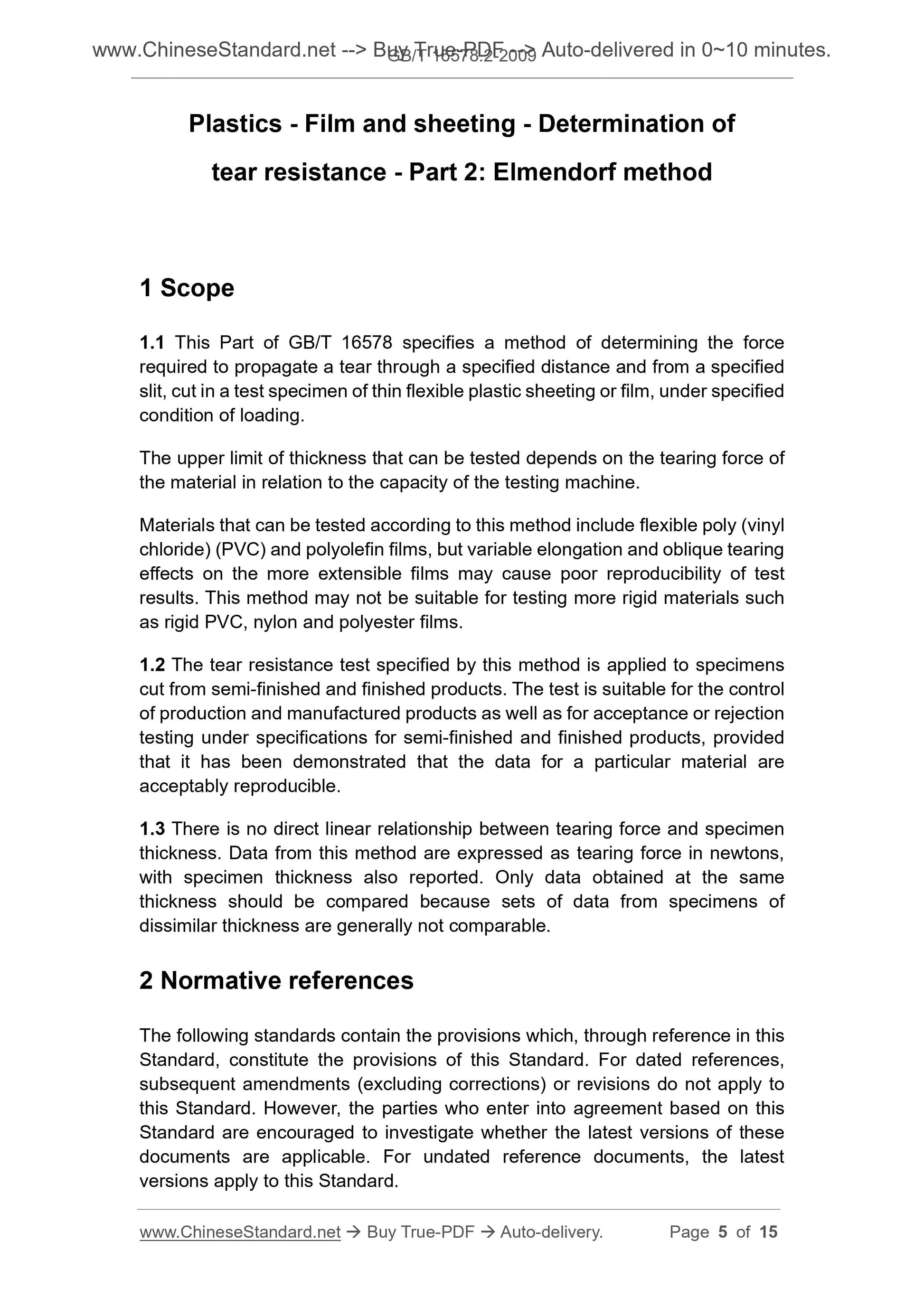1
/
of
5
www.ChineseStandard.us -- Field Test Asia Pte. Ltd.
GB/T 16578.2-2009 English PDF (GB/T16578.2-2009)
GB/T 16578.2-2009 English PDF (GB/T16578.2-2009)
Regular price
$140.00
Regular price
Sale price
$140.00
Unit price
/
per
Shipping calculated at checkout.
Couldn't load pickup availability
GB/T 16578.2-2009: Plastics -- Film and sheeting -- Determination of tear resistance -- Part 2: Elmendorf method
Delivery: 9 seconds. Download (and Email) true-PDF + Invoice.Get Quotation: Click GB/T 16578.2-2009 (Self-service in 1-minute)
Newer / historical versions: GB/T 16578.2-2009
Preview True-PDF
Scope
1.1 This part of GB/T 16578 provides for the cutting of a gauge on a thin, soft plastic sheet or film under specified load conditions.The fixed incision measures the force required to extend the tear of the incision to a prescribed distance.
The upper limit of the thickness of the specimen depends on the tearing force of the material associated with the range of the test machine.
This section applies to soft polyvinyl chloride (PVC) and polyolefin film materials, but varying elongation and oblique tearing will stretch
Longer films have poor test repeatability. This method is not suitable for hard materials such as rigid polyvinyl chloride, polyamide and polyester film.
1.2 This section also applies to specimens cut from finished and semi-finished products. When the test data has good repeatability, the method can be used as a quality
Specification for acceptance, acceptance, or rejection of quantity control, finished or semi-finished products.
1.3 There is no direct linear relationship between tear strength and sample thickness. The results obtained by this method are expressed by the tearing force (in Newtons).
The sample thickness should be reported. Only the data obtained at the same thickness can be compared because the data obtained from samples of different thicknesses
Often unmatched.
Basic Data
| Standard ID | GB/T 16578.2-2009 (GB/T16578.2-2009) |
| Description (Translated English) | Plastics -- Film and sheeting -- Determination of tear resistance -- Part 2: Elmendorf method |
| Sector / Industry | National Standard (Recommended) |
| Classification of Chinese Standard | G31 |
| Classification of International Standard | 83.140.10 |
| Word Count Estimation | 12,152 |
| Date of Issue | 2009-06-15 |
| Date of Implementation | 2010-02-01 |
| Older Standard (superseded by this standard) | GB/T 11999-1989 |
| Quoted Standard | GB/T 2918-1998; GB/T 6672-2001 |
| Adopted Standard | ISO 6383-2-1983, IDT |
| Regulation (derived from) | National Standard Approval Announcement 2009 No.8 (Total No.148) |
| Issuing agency(ies) | General Administration of Quality Supervision, Inspection and Quarantine of the People's Republic of China, Standardization Administration of the People's Republic of China |
| Summary | This standard specifies the conditions under specified load on the specimen thin and soft plastic sheet or film of a prescribed cut incision, the incision side deserting from the force required to tear method to extend the provisions. Upper limit depends on the thickness of the specimen and test machine range relevant material tearing force. This section applies to soft PVC and polyolefin films and other materials, but the change of elongation and tear will tilt test repeatability poor elongation larger film. This method does not apply to rigid PVC, harder materials such as polyamide and polyester film. This section also applies to samples taken from the finished and semi-finished cut of. When the test data with good reproducibility, the present method can be used for quality control, finished or semi-finished products of acceptance or rejection of the specification. |
Share
